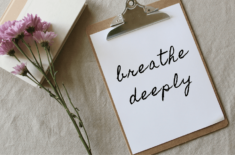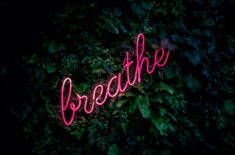By regulating the prana, we regulate our minds, because the two always go together.
If one is controlled, the other is automatically controlled as well.
– Swami Satchidananda, The Yoga Sutras of Patanjali
Today you’ll take about 23,000 breaths.
Each breath is influenced by your thoughts and emotions.
And, conversely, your thoughts and emotions are influenced by the kind of breaths you take.
Your inhales and exhales can be either an asset or a liability. #choosewisely Click To TweetYour breath can be an ally or a foe depending on how you use it.
If you don’t learn to consciously control your breath it will control you and it will be harder to manage your mood.
Most of us spend the majority of our time breathing unconsciously and erratically and in a shallow way.
This sends distress signals to your mind and body which alters the way you feel and the way you perceive the world around you.
This makes conditions like chronic stress, anxiety, and depression much worse.
Not breathing optimally might actually be impacting your quality of life in ways you’re even not aware of…
How Yoga helped me transform panic attacks into inner calm.
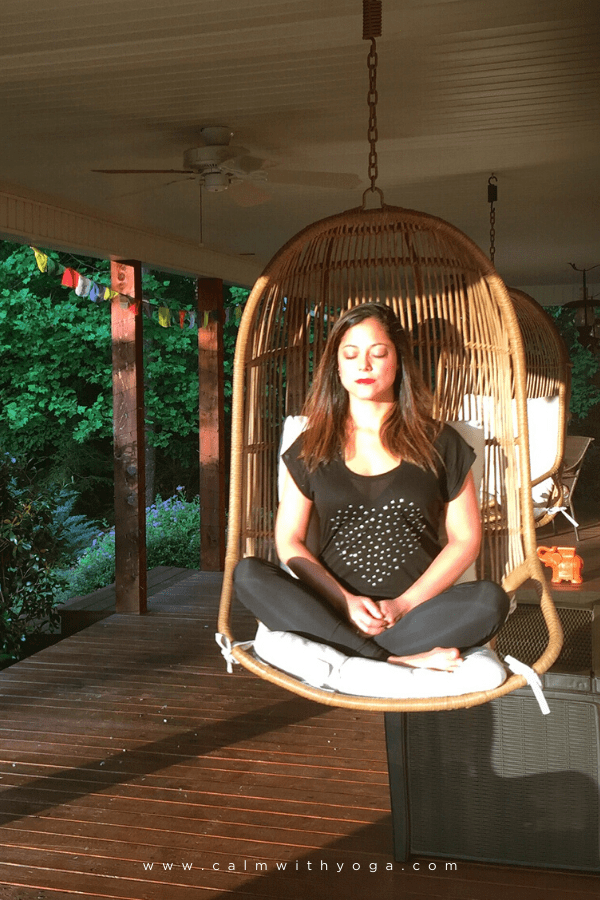
This is exactly what happened to me a few years ago when I was majorly struggling with anxiety, insomnia, and chronic panic attacks.
I’ve struggled with these since early childhood but things in my personal life blew up in my face and I ended up having a straight-up “dark night of the soul” moment a few years back.
I found myself living alone in the middle of the North Carolina wilderness and everything intensified.
I couldn’t sleep and when I finally did manage to sleep I couldn’t stay asleep unless I self-medicated.
I’d wake up with dread every morning and felt like my lungs were being held captive by some invisible force that had me gasping for air.
The panic attacks started getting more and more frequent and I got scared.
Every time the waves of panic overtook me I felt like a prisoner in my own body as I gasped for air.
My body sweating profusely, and my heart pounding intensely inside my chest.
I got tired of self-medicating and seeking solace in food, alcohol, and other distractions.
I knew I had to find another way because I just couldn’t keep going the way I was going.
In a last-ditch effort to save myself from myself, I signed up for a yoga teacher training immersion hoping that it would help me finally feel some relief.
I was a mess and felt lost, until, like a butterfly emerging from her cocoon, I finally shed various old layers of my being.
I taught myself to reclaim control of my life, my body, and my mind, by first reclaiming control of my own breath.
I emerged from this dark time as a renewed person, but not until I discovered the practice of Raja yoga – the yoga of the mind and emotions.
Contrary to Hatha Yoga (known as the physical yoga), only a small portion of Raja Yoga is focused on the poses (asanas).
And even then, the poses are really only a means to an end – a calm mind and a balanced mood.
How to reclaim control of the breath according to the Yoga Sutras:

It was during this dark time that I learned how to breathe calmly and efficiently by studying the ancient yogic wisdom that is known as Patanjali’s Yoga Sutras, the primary text of Raja yoga.
The Yoga Sutras are attributed to the sage Patanjali, who, approximately 2,000 years ago, outlined what’s now known as the eight limbs of yoga (ashtanga yoga in Sanskrit) or the Yogic Path.
This form of yoga practice is intended to help us awaken understanding and insight, and cultivate the quality of calm balance regardless of outside circumstance, while also growing inner strength and resolve.
The eight limbs are:
1 – The Yamas (Self-regulating behaviors)
2- The Niyamas (Personal observances)
3- Asana (Meditational postures)
4- Pranayama (Regulation of life force energy/ kundalini via breath control)
5- Pratyahara (Drawing the senses away from the external world and towards the internal world)
6- Dharana (Sustained and one-pointed focus)
7- Dhyana (Meditation)
8- Samadhi (Transcendence of the limited mind and lower self)
It was through observing the fourth limb, pranayama, that I experienced a visceral shift occurring within.
The conscious attention and control of my own inhales and exhales offered me a safe place to direct my anxious and fearful energy.
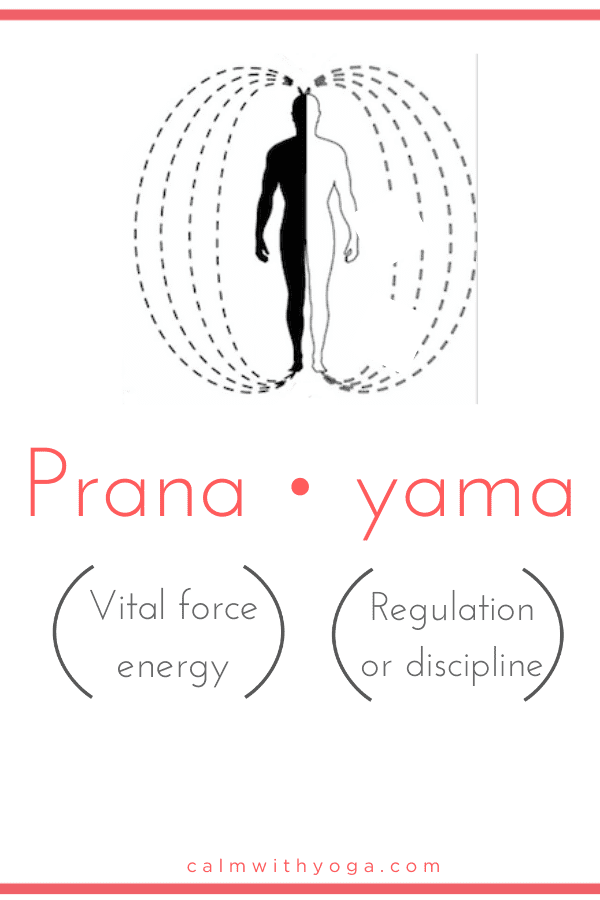
The practice of pranayama is based on specific breathing techniques aimed at regulating your internal vital force energy (prana.)
We can all benefit mentally, emotionally, and physically from regularly practicing pranayama techniques.
And it’s much easier than you might think to get started…
A summary of the calming power of our breath according to the Yoga Sutras:
Here’s what Patanjali had to say about the power of breathing exercises…
Accompaniments to the mental distractions include distress, despair, trembling of the body, and disturbed breathing.
– Sutra 1.31, Pada (Book) 1
Our breath and our mental and emotional state form a feedback loop.
When we experience mental or emotional stress, such as when we’re anxious or sleep deprived, our breathing becomes compromised.
When our breathing becomes compromised, our bodies become compromised.
And a weak or sick body or mind makes walking the eight-limbed path more challenging.
Calm is retained by the controlled exhalation or retention of the breath.
– Sutra 1.34, Book 1
Indeed, Patanjali was a sage before his time, for he knew what science has now proven: controlled, deep breathing shifts our nervous system by activating the calming, regenerating, and relaxing response while lowering the stress response. (1)
Controlled, prolonged exhalation, in particular, has been shown to activate our parasympathetic nervous system, the branch of our nervous system responsible for our “rest-and-digest” relaxation response. (2)
The modifications of the life-breath are either external, internal, or stationary.
They are to be regulated by space, time, and number and are either short or long.
– Sutra 2.50, Book 2
Here, Patanjali outlines the parameters of a proper pranayama practice: inhaling, breath retention, and exhaling.
Pranayama variations include:
– where we focus our attention whilst breathing (on the breath itself, at the base of the spine, or at the heart center)
– the length of time we hold the breath
– the number count we inhale and/or exhale for (inhale for 5, hold for 7, exhale for 10.)
There is a fourth kind of pranayama that occurs during concentration on an internal or external object.
– Sutra 2.51, Book 2
This type of pranayama happens automatically and without conscious effort when we’re really engulfed and focused on something.
This is called kevala kumbhaka, which is the easy, unintentional retention that happens when we’re in the flow or in a deeply meditative state.
In the following two sutras, Patanjali discusses the benefits of pranayama:
As a result, the veil over the light is destroyed.
– Sutra 2.52, Book 2
Although it might be hard to believe at first, the simple act of regulating our own breath has the power to create small ripples of change that extend outward, eventually impacting all areas of our life.
This is the biggest benefit of a consistent, regular pranayama practice—the veil of mental darkness and heaviness is destroyed with every conscious breath we take.
Eventually, all that remains is our own inner light, and the truth of who we really are is exposed.
The mind becomes fit for concentration.
– Sutra 2.53, Book 2
With the removing of the veil comes a stronger presence of mind and increased mental focus and concentration, which is necessary in order to reach the eighth and final limb: Samadhi, or transcendence and union with the higher self.
The portal through which we can begin to calm our anxious energy in order to transcend to higher states of being is found in our breath.
Take a beautiful full breath in by expanding your lower belly right now.
Hold it for two counts and feel the infusion of vital energy filling your lungs.
Exhale slowly and fully as you bring your lower belly in toward your spine.
Repeat. Repeat. Repeat.
Follow along with this quick guided pranayama mini-session, then end by repeating this mantra:
sat nam – I am Truth
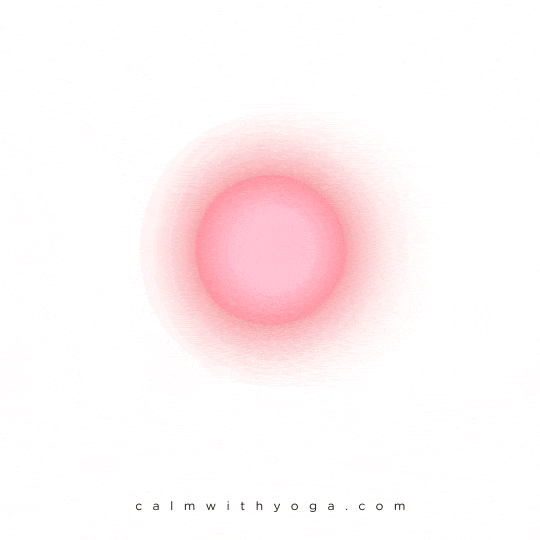
REFERENCES
:
(1) https://www.researchgate.net/publication/7154990_Physiology_of_long_pranayamic_breathing_Neural_respiratory_elements_may_provide_a_mechanism_that_explains_how_slow_deep_breathing_shifts_the_autonomic_nervous_system
(2) https://www.ncbi.nlm.nih.gov/pubmed/21763472




